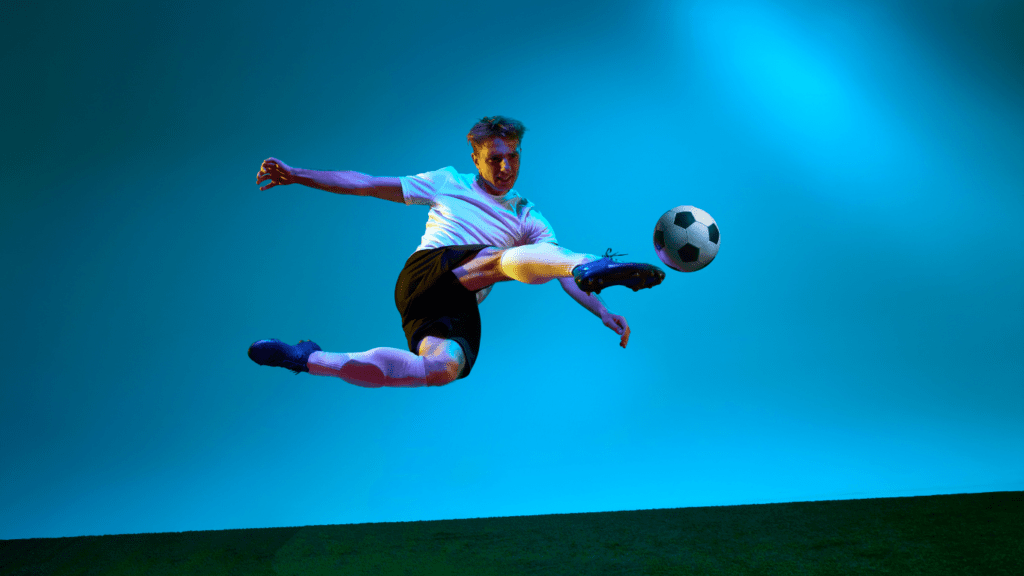Recovery could be the missing link in your training routine. Research shows that overtraining syndrome affects nearly 60% of elite athletes and about 30% of non-elite endurance athletes. Many continue to push their limits without allowing their bodies the time they need to rebuild.
Training without proper recovery is like driving with the brakes pressed. The fitness world often celebrates long, punishing workouts and the idea of pushing through pain. However, this approach can actually slow your progress rather than accelerate it. True athletic improvement depends on finding the right rhythm between effort and rest.
When your body remains in a constant state of stress, it cannot repair itself effectively. Fatigue increases, performance declines, and the risk of injury rises. The American Council on Exercise recommends that athletes involved in high-intensity training take at least one rest day every seven to ten days to give their bodies time to recover.
This article explains why recovery is an essential part of every athlete’s training plan. You’ll learn how smart recovery methods can improve performance, reduce burnout, and support long-term success in your sport.
Why most athletes overlook recovery
Athletes often skip recovery to train more. This comes from deep-rooted beliefs about what makes “real” training and social pressure that celebrates non-stop effort.
The ‘no pain, no gain’ myth
Jane Fonda gets credit for making “no pain, no gain” popular during the 1980s aerobics boom. This saying has become part of sports culture and created a dangerous belief that you need pain to improve as an athlete.
Many athletes ignore their body’s warning signs because of this mindset. Mild muscle soreness (DOMS) might be normal after trying new or intense workouts. Sharp or lasting pain could mean you’re hurt. There’s nothing heroic about pushing through serious pain – it just makes things worse.
Science tells us that pain doesn’t mean your workout is working. Your muscles can grow whether they feel sore or not. Working out through pain puts you at risk of major injuries, especially when pain levels go above 3 out of 10.
Why recovery is not just for the injured
Most athletes think recovery only matters when they’re hurt or completely exhausted. Recovery is a vital part of training for everyone – not something you can skip.
Athletes and coaches look at recovery differently. Athletes see it as a way to avoid injuries and feel less tired. Coaches focus on how it boosts performance. This difference in thinking means athletes don’t always give recovery the attention it needs.
Sports science has come a long way, but old myths stick around. Some athletes think more training always means better results, so they skip rest days. Others mix up rest with recovery. They don’t realize recovery happens 24/7 through everything we do outside sports.
Training works by pushing your body past its comfort zone. The real strengthening happens when you rest and your body repairs itself. Without proper recovery time, athletes risk burning out instead of getting better. Studies show burnout affects all but one of these elite athletes (60%) and nearly a third of regular endurance athletes (30%).
The 5 pillars of effective athlete recovery
Recovery is much more than simply taking a break. It’s a structured process that combines several key elements working together to help your body repair, rebuild, and return stronger. Below are the five essential pillars of proper athletic recovery:
- Active Recovery and Mobility Work
Gentle movement boosts blood flow without adding extra strain. Activities such as light jogging, swimming, or cycling help clear metabolic waste from muscles and speed up healing. Mobility exercises also improve flexibility and range of motion, leading to better overall performance. - Manual Therapy and Soft Tissue Care
Techniques like massage, joint mobilization, and strain-counterstrain therapy release tension, improve circulation, and reduce pain. For athletes or professionals seeking relaxation and recovery, exploring options such as massage Park Lane can offer a premium experience that supports faster muscle repair and enhanced overall well-being.
These methods help muscles and connective tissues recover more quickly while restoring balance and movement efficiency. - Physical Therapy and Corrective Exercises
Corrective exercises strengthen weak muscles, improve posture, and restore proper movement patterns. When combined with targeted physical therapy, they prevent recurring injuries and support long-term athletic performance. - Recovery Tools and Technology
Modern tools like massage guns, compression boots, and foam rollers enhance recovery by reducing soreness and fatigue. Studies show these devices increase blood flow and muscle repair, allowing athletes to bounce back faster between training sessions. - Sleep, Hydration, and Nutrition
Quality sleep is essential for muscle repair and hormonal balance. Research shows that well-rested athletes perform with greater accuracy and endurance. Staying hydrated keeps your body temperature stable and mind alert, while post-workout carbohydrates help replenish energy stores for your next session.
Why hyperbaric chambers are gaining popularity
Image Source: Oxygen Health Systems
Hyperbaric oxygen therapy (HBOT) has become a state-of-the-art recovery tool that elite athletes around the world are adopting. The treatment allows users to breathe 100% pure oxygen in a pressurized chamber, helping more oxygen dissolve into the bloodstream and reach damaged tissues.
Research behind HBOT shows promising results. Studies demonstrate that it improves physical performance in middle-aged athletes and significantly increases maximal oxygen consumption (VO₂Max) compared to placebo treatments. HBOT’s effect on mitochondrial respiration is particularly notable, as it enhances oxygen phosphorylation capacity and cellular energy production.
Athletes from various sports have embraced this technology. NBA star Kyle Lowry reportedly spends several hours sleeping in his chamber to speed up recovery and increase energy. Boxing champions Josh Taylor and Caleb Plant also include HBOT sessions in their post-training routines to support faster muscle repair.
With new advancements, athletes no longer need to rely solely on clinic-based systems. Modern options, such as a hyperbaric chamber portable model, make it easier to access oxygen therapy at home or on the road. These portable systems offer the same pressurized environment in a convenient setup that fits the busy lifestyles of professional and recreational athletes alike.
HBOT was once reserved for medical use, but it now ranges from single 60-minute sessions to comprehensive weekly treatment plans. The therapy reduces inflammation, one of the body’s main sources of fatigue and pain, while stimulating stem cell activity that accelerates recovery.
Personalizing your recovery strategy
Recovery approaches work best when they match your specific needs. Athletes need tailored recovery strategies that consider their unique requirements based on several factors.
Different needs for different sports
Each sport needs its own recovery approach. Weightlifters focus on strength and conditioning recovery, while runners need their gait checked and lower body strength work. Your treatment should match what your sport demands. This helps you heal faster and get back to playing sooner. To cite an instance, basketball players need different recovery methods than golfers or gymnasts because each sport stresses the body differently.
Age, training load, and recovery time
Scientists have found that recovery rates change as we age, with changes starting around 40. Older muscles take longer to bounce back after exercise. Research comparing young and middle-aged men showed that untrained middle-aged men had the most muscle damage after squats. Trained middle-aged men came next, and young trained males showed the least damage.
Your training load affects your recovery status directly. Athletes’ recovery scores drop the day after tough pre-season training sessions. The right recovery time between workouts will improve your training efficiency and performance.
Listening to your body vs relying on data
Your body awareness helps you spot early signs of stress, discomfort, or injury. You can figure out which areas need more attention when you tune into your physical signals. Among other tools, devices like actigraphy give you personal data that supports your recovery program.
The best approaches mix what your body tells you with what the numbers show. Regular checks and updates to your plan based on these findings will keep it matched to your changing needs.
The long-term benefits of prioritizing recovery
Image Source: FasterCapital
Recovery offers far more than just relief from muscle soreness. It serves as the foundation for athletic longevity, helping athletes perform better, stay healthy, and maintain motivation over time. Here’s what happens when recovery becomes a consistent part of your training plan:
- Injury Prevention and Reduced Burnout
Proper recovery lowers the risk of both acute and overuse injuries, especially in demanding sports like basketball and soccer. Studies show that overtraining syndrome impacts nearly 60% of elite athletes and around 30% of non-elite endurance athletes. Once this condition develops, it can take months to reverse. Many athletes who have experienced burnout now make recovery a non-negotiable part of their routines to protect their long-term health. - Improved Consistency and Performance
The body strengthens and repairs itself during rest, not during workouts. Recovery gives your muscles the chance to rebuild, leading to improvements in strength, speed, and endurance. Without it, cortisol levels stay elevated, slowing progress and reducing overall performance capacity. - Better Mental Health and Motivation
While training supports mental well-being, the benefits fade without rest. Consistent recovery helps regulate stress hormones and keeps the nervous system balanced. Athletes who make recovery a priority report improved focus, motivation, and decision-making both on and off the field. - Sustainable Athletic Progress Over Time
Long-term athletes who value recovery often enjoy longer, steadier careers. Studies show that maintaining balanced training loads helps the body adapt, recover faster, and protect itself from future injuries. This creates a positive cycle of consistent growth and performance.
Conclusion
Recovery is not a luxury or an afterthought—it is the foundation that holds every workout together. The best athletes in the world understand that progress happens in moments of rest just as much as in moments of intensity. Muscles rebuild, the mind resets, and endurance strengthens when recovery is treated as part of the plan rather than a break from it.
Every training session takes something out of you, but recovery gives something back. That balance determines how long you can perform, how well you adapt, and how much you grow. Prioritizing rest, using modern recovery tools, and understanding your body’s signals all contribute to building a sustainable athletic future.
True strength is not only about how hard you push but also how wisely you restore. Making time for recovery is what separates short bursts of performance from a lifetime of achievement.




